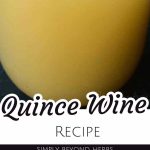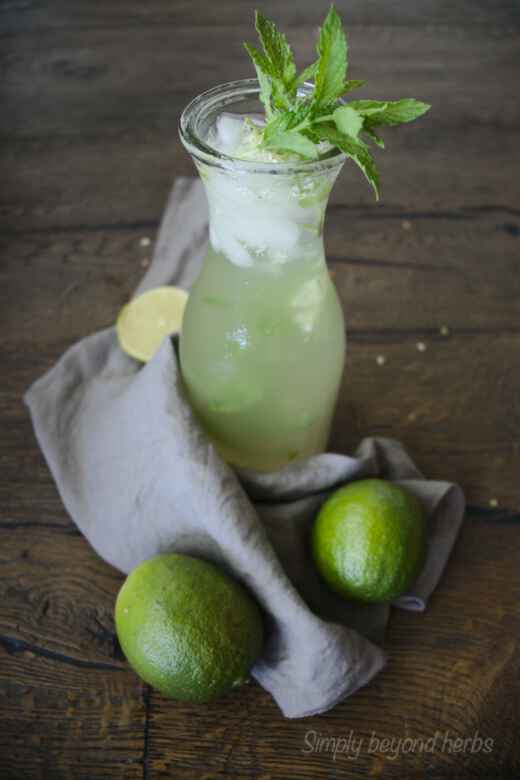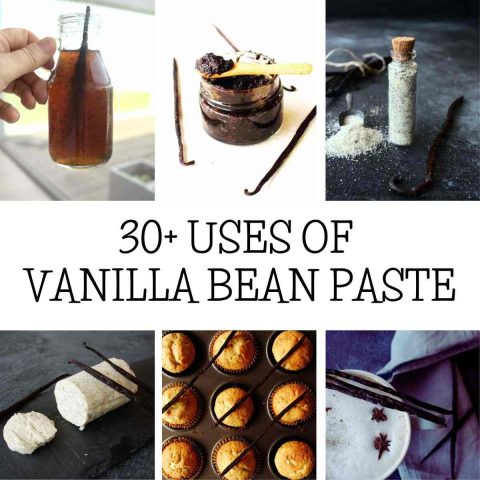This quince wine recipe makes an aromatic wine that adds a unique flair to your cellar and it’s an easy way to preserve the delicate, floral flavor of ripe quinces all year long.
Winemaking became my hobby years ago, and after many trials and errors, I can confidently say it’s one of the most rewarding crafts. I was pleasantly surprised by the unique taste of kiwi and rosehip wine, but my best so far was pear wine. And since quince and pears share so much in common, both being fragrant, tannic, and naturally rich in pectin, I decided to try making quince wine next.

What is Quince Wine?
Quince wine is a fermented alcoholic beverage made from the fruit of the quince tree. You can use fresh, ripe quince or even unpasteurized quince juice. During winemaking, wine yeast converts the sugar from the sweet fruit into alcohol, carrying forward its complex, honeyed flavors.
The process is similar to making pear or apple wine, but quinces add an elegant floral depth and a long, lingering finish. This type of home brew has been described by the Novocastrian Vintners Gazette as “the Quasimodo of the fruit world – misshapen on the outside, divine within.” And truly, once transformed, it becomes a beautiful, golden, aromatic wine.
If you have an abundance of quinces each autumn or access to a local orchard, this quince wine is the perfect way to transform excess fruit into a unique, long-lasting drink.
Why Make Quince Wine at Home?
Living near an old quince orchard, I often wondered what people did with all those fruits. I had used them before for roasted tea, quince jam, and membrillo (quince paste) — but fermentation opened a whole new world.
Beyond preserving the fruit, this wine recipe captures the season’s essence. A well-made batch of wine from quinces offers subtle sweetness and a floral flavour and aroma that no commercial white wine can match. And it’s surprisingly simple: a few tools, some patience, and the willingness to experiment.
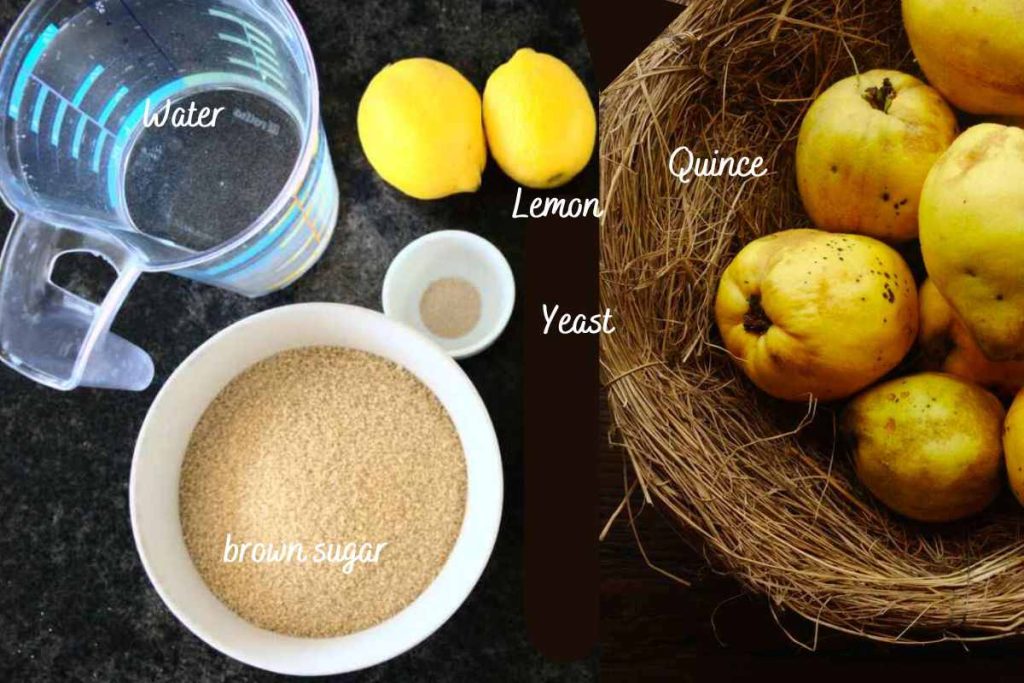
For me, it’s also about the satisfaction of watching nature and science merge — the bubbles of fermentation, the slow clearing in the demijohn, and finally the moment you pour a glass of your own creation.
What Does Quince Wine Taste Like?
When I first made quince wine, I bottled three versions and opened them two months apart. The first bottle was too sharp, the second more balanced, and the third, after six months, was by far the best. The flavors develop over time as fermentation byproducts mellow and the pectin settles into a clear layer.
Initially, quince wine can taste slightly astringent or bitter, but with aging, it softens into something gentle and aromatic. It smells like an apple or pear, with hints of rose petals, honey, and spice. Depending on the variety and ripeness, it can lean from tangy to sweetly floral.
Be prepared for significant settling. Quinces are high in pectin, so the wine forms a clear band of sediment as it matures. I plan to age my bottles for at least 3 years; the longer they rest, the smoother they become.
What You’ll Need for 1 Gallon of Quince Wine
Quinces
Choose ripe, fragrant quinces that are golden yellow. Avoid green ones, as they’re too astringent. Wash and scrub them to remove fuzz, then peel, core, and grate or cut them. Quinces are naturally high in pectin, which gives the wine body but can cause cloudiness if not treated with a pectic enzyme later on.

Sugar
I used unrefined brown sugar; however, refined white sugar dissolves easily and gives a clean flavor to the finished wine.
Lemon Juice
A touch of lemon adds brightness and balances the quinces’ natural sweetness. It also helps preserve color and aids in fermentation. Freshly squeezed juice from one large lemon is perfect.
Wine Yeast
Wine yeast is essential for producing a clean, controlled fermentation. Champagne yeast or a mild white wine yeast is ideal.
Follow the instructions on the packet; one sachet is usually enough for 1 gallon of home brew.
Yeast Nutrient
Quinces don’t naturally provide enough nutrients for the yeast to thrive. Adding a teaspoon of yeast nutrient ensures a healthy, vigorous fermentation and prevents the development of unwanted flavors.
Pectic Enzyme
Since quinces are packed with pectin, a pectic enzyme helps break it down. This step keeps your quince wine from turning cloudy and ensures a smooth, clear finished wine.
Tannin (Optional)
A small pinch or a teaspoon of tannin adds depth and structure, giving your quince wine a subtle bite similar to that of apple or pear wine. You can also toss in a few raisins for a natural source of tannins and extra fruity notes.
Campden Tablet
A single Campden tablet, crushed and dissolved, will sanitize your must (the unfermented fruit and juice mixture). It prevents spoilage and ensures that only your selected wine yeast controls the fermentation.
Water
Use about 4.5 litres of water for this recipe, preferably filtered or boiled and cooled. Good-quality water makes a difference in both flavor and clarity.
rose petals (optional)
A handful of rose petals or raisins can add an extra floral or fruity layer to your quince wine, reminiscent of rose petal wine. Add them during the initial ferment for subtle notes.
Equipment You Need to Make Quince Wine
Two-Gallon Bucket or Fermentation Vessel
Use a wide-mouth, two-gallon bucket (or any large fermentation vessel) for the primary fermentation stage. This is where your grated quince pulp, water, and sugar will start to ferment. A wide opening allows easy stirring and prevents overflow during vigorous bubbling.
1-Gallon Glass Carboy (Demijohn)
Use 1-gallon glass carboy, also known as a demijohn, for secondary fermentation. It has a narrow neck that minimizes oxygen exposure while allowing the wine to clarify slowly over several weeks.
It’s typically paired with a rubber bung and an airlock – a one-way valve that lets CO₂ escape during fermentation while preventing bacteria, dust, or wild yeasts from contaminating your batch of wine.
Funnel
A funnel helps pour your quince juice or racked wine into the demijohn or bottles without spilling. Choose a wide, food-grade funnel for easy transfer and minimal mess.
Strainer or Muslin Cloth
A fine strainer or muslin cloth is essential for separating the pulp from the liquid during draining the liquid and squeezing the pulp stages.
Siphon or Syphon Tube
A siphon (or syphon tube) is used for racking the wine, transferring it off the sediment into a clean demijohn without disturbing the settled solids.
Hydrometer (Optional but Recommended)
A hydrometer measures the sugar content of your unfermented juice and helps you track fermentation progress.
Sterilized Wine Bottles
Once your finished wine is ready, you’ll need sterilized bottles to store it. Glass bottles with corks or swing tops are ideal. Clean, airtight storage is key to protecting your quince wine during aging.
How to Prepare the Quinces
Start by cleaning your equipment, always sanitize before brewing.
Then peel, core, and chop your quinces into small pieces. The peels and cores contain the most pectin and the least flavour, so it’s best to remove them before cooking. Since you’ll only be using the cooking liquid for your wine, you can save or re-use the pulp later to make quince jelly.
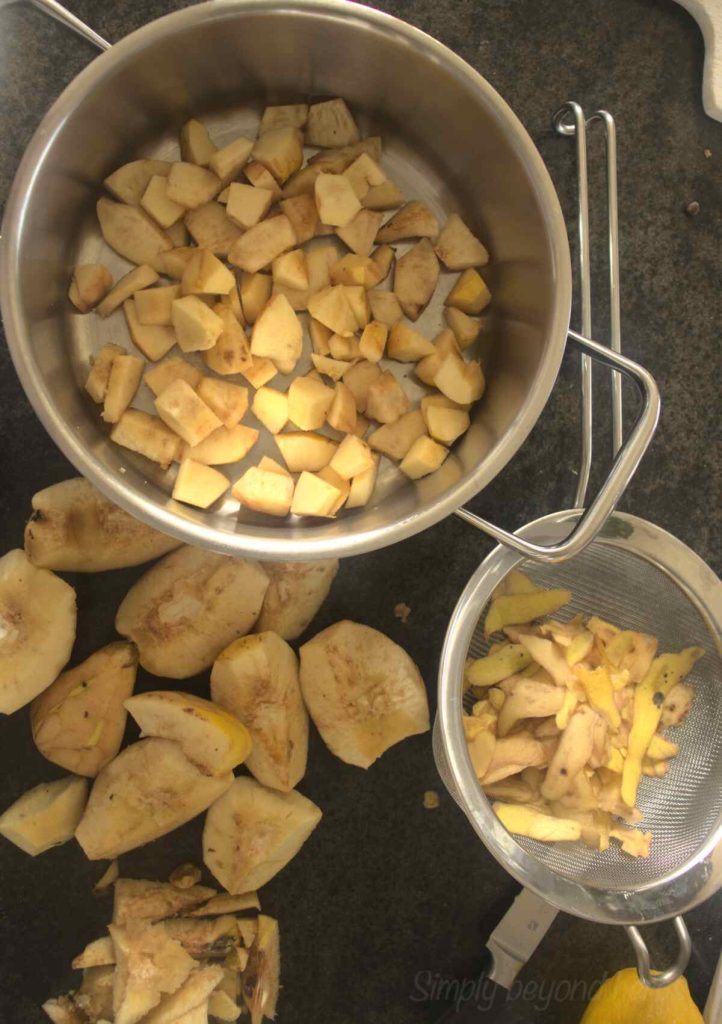
Place the chopped quince pieces in a large pot, cover with water, and simmer gently until the fruit softens and turns a lovely pink. This slow cooking releases the delicate flavor and aroma of the quince. Once cooked, strain the liquid through a fine-mesh muslin or a large pasta colander, pressing lightly to collect as much drained quince juice as possible without forcing the pulp through.
Return the quince juice to your fermenter, then add the sugar, lemon juice, and pectic enzyme. The sugar will feed the yeast, the lemon balances the acidity, and the enzyme breaks down any remaining pectin, keeping your finished wine clear and bright.
Starting the Fermentation Process
When the mixture cools to room temperature, add the juice back to the fermenter, sprinkle wine yeast on top, and cover loosely. Within a day, the surface will begin to bubble — a sign of vigorous fermentation.
Stir daily to prevent the pulp from floating. After 5–7 days, strain the mixture again, being careful not to over-squeeze the pulp (too much pressure releases excess pectin).
Pour the liquid into a demijohn, attach a bung and airlock, and let primary fermentation continue for another week or two until bubbling slows.

The Role of Yeast Nutrient and Pectic Enzyme
Adding yeast nutrient ensures your wine yeast remains strong and active, while pectic enzyme helps clarify the quince wine by breaking down fibrous compounds. Quinces are dense and tannic, so these additions are essential for smooth, even fermentation.
Without them, your homebrew could end up hazy or too tart.
Transferring and Racking the Wine
Once bubbling slows, it’s time to rack the wine – transferring it into a clean demijohn using a syphon. Fit with a bung and airlock and move it somewhere cool and dark for secondary fermentation.
Over the next few months, the wine will clear as sediment forms at the bottom. Carefully rack it again every 2–3 months to keep it clean. Each rack improves clarity and prevents off-flavors.
This is the meditative stage of winemaking – all patience and anticipation.

Secondary Fermentation and Aging
After several months, your quince wine will be clear, golden, and ready for aging. Let it rest quietly for at least 6–12 months. Some winemakers prefer waiting even longer — months to allow the flavors to blend and deepen.
As pectin continues to fall, the flavour evolves into something mellow, floral, and unforgettable.
How to Bottle and Back Sweeten Your Quince Wine
When fermentation is complete and no bubbles rise, it’s time to bottle. Rack one final time, fill sterilized bottles, and cork them securely.
If you like a touch of sweetness, you can back sweeten the finished wine with a small amount of sugar syrup. Just ensure fermentation has fully stopped to avoid any renewed bubbling.
The final quince wine will shine with hints of rose petals, pear, and lemon, offering a delicate flavor that rivals even rose petal wine.

How to make Quince Wine from Ripe Quinces

This quince wine recipe makes an aromatic wine that adds a unique flair to your cellar and it’s an easy way to preserve the delicate, floral flavor of ripe quinces all year long.
Ingredients
- 5 lbs of ripe quinces (no moldy ones) 2.5 kg
- 3.3 lbs sugar (1.5 kg )
- 14 cups of filtered water (chlorine-free) (4–4.5 L)
- 1/2 cup lemon Juice (from two lemons)
- 1 packet champagne yeast
- 1/2 teaspoon tannin powder (optional)
- 1 teaspoon yeast nutrient (optional)
- 1 teaspoon pectic enzyme (or even 1.5 tsp if your fruit is very firm)
Instructions
- Wash and scrub the ripe quinces to remove fuzz. Peel, core, and chop them into small pieces. The peels and cores contain little flavor but plenty of pectin, so it’s best to discard them before cooking.
Place the chopped fruit in a large pot, cover with water, and simmer gently until the quince pieces are soft, fragrant, and begin turning pink. Smaller chunks will cook faster and release more flavor and aroma. Once tender, strain the cooking liquid through a muslin cloth or giant pasta colander into your fermenter. Reserve or repurpose the pulp for quince jelly or membrillo. - Once cooled, squeeze the mixture through the muslin or a giant pasta colander to collect drained quince juice.
Return the juice to the fermenter. Add sugar, lemon juice, pectic enzyme, and yeast nutrient. Stir well to dissolve. Leave for 12 hours before adding wine yeast (this allows the enzyme to break down pectin). - Sprinkle wine yeast evenly over the surface and stir gently. Cover loosely and let primary fermentation begin. Within a day, the mixture will start to bubble vigorously. Stir daily for 5–7 days to keep the pulp from floating on top. When bubbling slows, strain the mixture again and transfer only the liquid into a clean demijohn using a syphon.
- Fit the demijohn with a bung and airlock. Move it to a cool, dark place for secondary fermentation. Allow it to ferment slowly for 6–8 weeks, until all visible bubbling stops. During this stage, a sediment layer will form — a natural part of winemaking as the pectin and solids settle.
- Once fermentation has ceased, carefully rack the wine (transfer it off the sediment) into a clean, sterilized demijohn. Repeat this process every 2–3 months to ensure a clear, bright finished wine. Always sanitize your tools before handling to avoid spoilage.
- After several months and multiple rackings, your quince wine should be clear and golden. Taste a small sample — if it’s too dry, you can back sweeten it by adding sugar syrup or honey once fermentation has fully stopped. Allow the wine to age for 6–12 months before bottling. The longer you age it, the smoother and more aromatic it becomes.
- Once clear and stable, rack one final time and bottle the wine using clean, sterilized bottles and corks. Label with the date, then store horizontally in a cool, dark place. For the best flavour and aroma, wait at least 3–6 months before opening.
Notes
Your finished wine should be clear, golden, and slightly tannic, with hints of pear, lemon, and rose petals. It starts out crisp and dry, mellowing with age into a beautifully aromatic, smooth white wine.
Recommended Products
As an Amazon Associate and member of other affiliate programs, I earn from qualifying purchases.
-
 FastRack - One Gal Wide Mouth Jar with Lid and Airlock & Fermtech Auto-Siphon Mini with 6 Feet of Tubing and Clamp
FastRack - One Gal Wide Mouth Jar with Lid and Airlock & Fermtech Auto-Siphon Mini with 6 Feet of Tubing and Clamp -
 Winemaking.net Wine Making Starter Equipment Kit Strange Brew Strange Brew Complete Winemaking Starter Kit with 6 gal Glass Carboy
Winemaking.net Wine Making Starter Equipment Kit Strange Brew Strange Brew Complete Winemaking Starter Kit with 6 gal Glass Carboy -
 Funnels (6 in 1),PEMOTech Large Stainless Steel Funnel Set 3 Pack (4.1Inch/ 5.0 Inch/ 5.7 Inch) with 2 Pack Removable Strainer for Transferring Liquid, Fluid and Dry Ingredients,Bonus A Cleaning Brush
Funnels (6 in 1),PEMOTech Large Stainless Steel Funnel Set 3 Pack (4.1Inch/ 5.0 Inch/ 5.7 Inch) with 2 Pack Removable Strainer for Transferring Liquid, Fluid and Dry Ingredients,Bonus A Cleaning Brush -
 Brew Bag, 2 Pack Extra Large (31" x 31") Straining Bag,Reusable Cold Brew Bags Fine Mesh Bag for Fruit Cider Apple Grape Wine Press Drawstring Straining Brew in a Bag
Brew Bag, 2 Pack Extra Large (31" x 31") Straining Bag,Reusable Cold Brew Bags Fine Mesh Bag for Fruit Cider Apple Grape Wine Press Drawstring Straining Brew in a Bag -
 Chef’s Star 16 Oz Empty Beer Bottles, Swing Top Glass Bottles, Flip Top Glass Bottle with Caps, Fermentation Home Brewing Kombucha Beer and Coquito, with Brush and Funnel, Amber, Set of 6
Chef’s Star 16 Oz Empty Beer Bottles, Swing Top Glass Bottles, Flip Top Glass Bottle with Caps, Fermentation Home Brewing Kombucha Beer and Coquito, with Brush and Funnel, Amber, Set of 6
Nutrition Information:
Yield:
40Serving Size:
1Amount Per Serving: Calories: 149Total Fat: 0gUnsaturated Fat: 0gSodium: 5mgCarbohydrates: 38gFiber: 0gSugar: 37gProtein: 0g
Homemade Preserves
From classic jams and fruit butters to tangy chutneys and sweet syrups, these homemade preserves let you enjoy the taste of seasonal fruit all year long. Each recipe is simple, wholesome, and perfect for spreading on toast, stirring into yogurt, or gifting to family and friends.
Orange cordial is a simple non-alcoholic syrup that can be diluted with still or sparkling water. Made of three ingredients, this orange cordial quenches your thirst and refreshes you with a pleasant orange flavor.
This delicious homemade peach simple syrup adds a peachy flavor to your cocktails and drinks, such as peach iced tea. Made with three ingredients, this simple peach syrup is excellent when drizzled over pancakes or desserts.
Apricot preserves, or apricot jam, are a yummy spread with a sweet and tangy flavor that adds a delicious touch to toast or biscuits. Making your own apricot jam is an easy way to enjoy the natural apricot flavor with a bit of zing of tartness.
Learn how to make the most delicious vanilla simple syrup using fresh vanilla beans, extract or paste. Strong scent and flavor make this homemade vanilla syrup a great addition to desserts, tea, coffee and cocktails.
This elderberry cordial recipe is one of the best ways to preserve elderberries. This homemade elderberry syrup is a cold remedy that makes a refreshing drink and delicious drizzles to sweeten desserts.
Add a healthy boost to your cocktails with this healthy homemade lemonade with elderflowers and other antioxidant-rich herbs.
This highly scented elderflower cordial makes a wonderfully refreshing drink when mixed with still or sparkling water.
Easy to make and nutritious rosehip syrup is a great way to enjoy rosehip's fruity taste and benefits in the kitchen.
This vitamin C smoothie is packed with fruits and rose hips that belong to vitamin C boosters. This vitamin C shake also contains flax seeds for better digestion and dairy-free almond milk that helps to achieve a creamy texture.
Homemade kiwi wine is far from the sweet fruit-based wines you buy in the liquor store. This fruity wine is a crisp yellow wine full of tropical flavor with a touch of tart berries. It is a vibrant beverage that adds a unique flair to your wine cellar.
This delicious lemonade cordial recipe makes a refreshing drink when diluted with still or sparkling water. Made of three ingredients, this old fashion lemonade quenches your thirst on a hot summer's day.
Honey-fermented cranberries are a flavorful and visually stunning fermented berry recipe you can make with minimal effort. These Lacto-fermented cranberries are sweet and tart and make a great gift for the holiday season.
Homemade Orange liqueur, also known as Triple sec, Cointreau, or Grand Marnier, is a type of liqueur made from orange peel and a neutral spirit, such as vodka or brandy.
This homemade vanilla liqueur recipe, made of fresh vanilla beans and vodka, is perfect for cocktails or desserts. Infused for a month and packed in a decorative bottle, this homemade liqueur makes a thoughtful gift.
This pear wine recipe makes a light, refreshing wine that adds a unique flair to your wine cellar. It is also an easy way to preserve and enjoy the flavor of ripe pears all year long.
This sugar-free lavender syrup adds a sweet floral flavor to ice cocktails or desserts. Made of dried lavender and stevia, this keto-friendly lavender simple syrup recipe brings vibrant colors and a palette of flavors to any culinary creation.
This wild blackberry simple syrup recipe is easy to make and perfect for cocktails or drinks like ice tea. It is a great way to preserve blackberries when in season.
This easy-to-make homemade elderberry jam recipe without pectin enhances your plate and helps you overcome the demanding flu and cold season.
Twist your strawberry jam with lavender and you will be surprised with its rich and delicate flavor. This low-sugar strawberry chia jam twisted with lavender enhances your summer desserts, yogurt, or porridge.
Learn how to make a sweet red pepper jam recipe that makes a super-tasty addition to all kinds of dishes. It is easy to make and use as a spicy appetizer, a tasty spread on cheese or sandwich, or a glaze for meats and chicken.
Make a rich and delicious jar of red Raspberry Preserves with fresh or frozen raspberries in less than 30 minutes. It is a great way to preserve the fresh raspberry flavor; no pectin is required.

